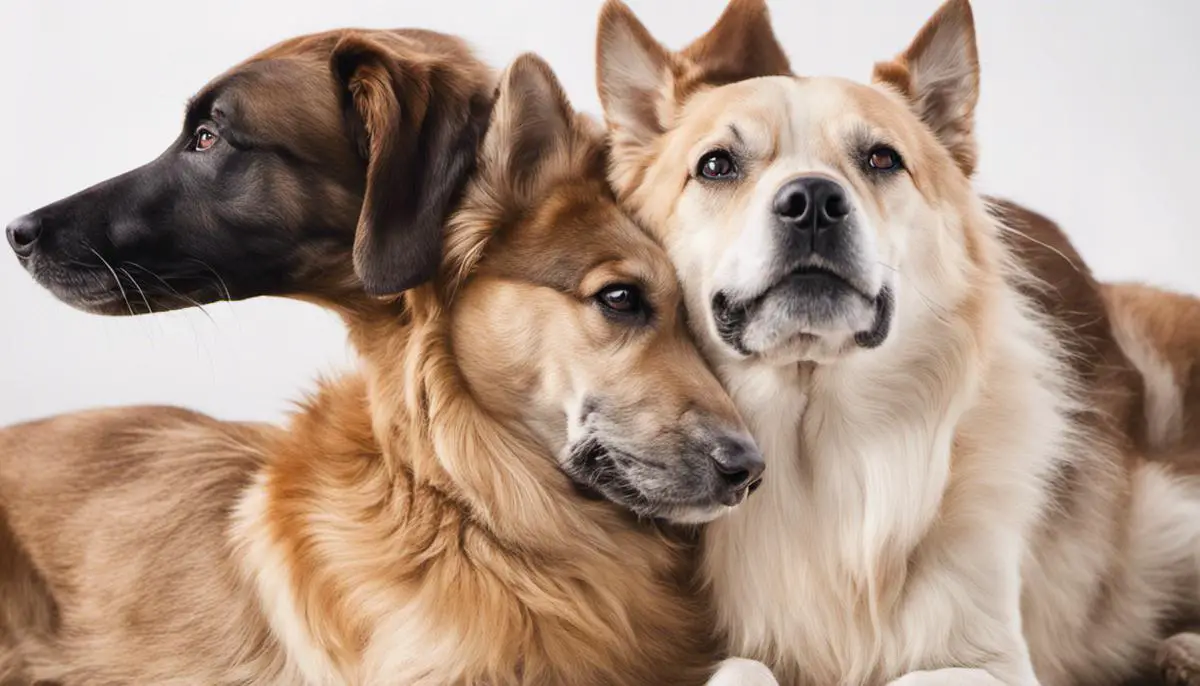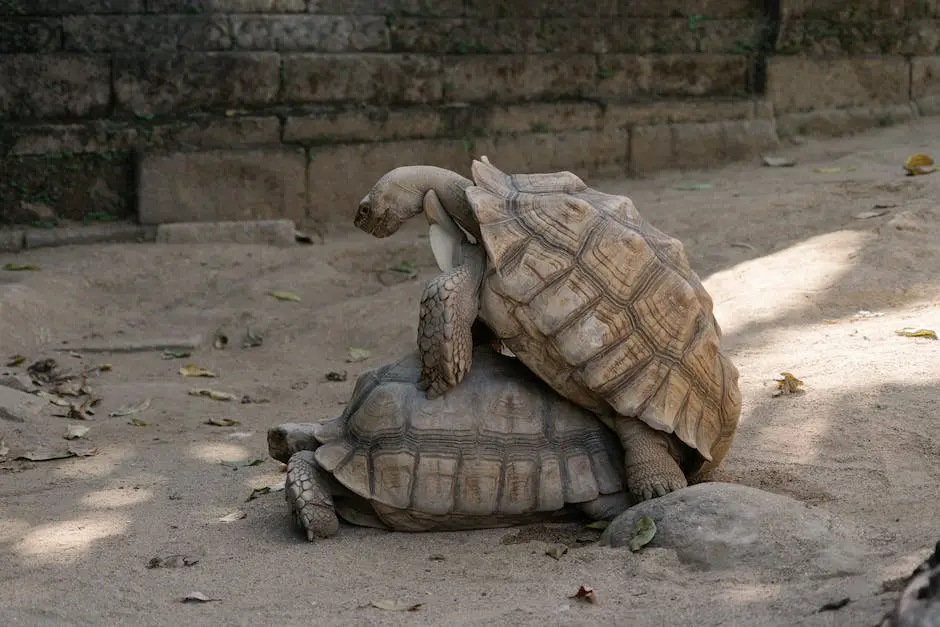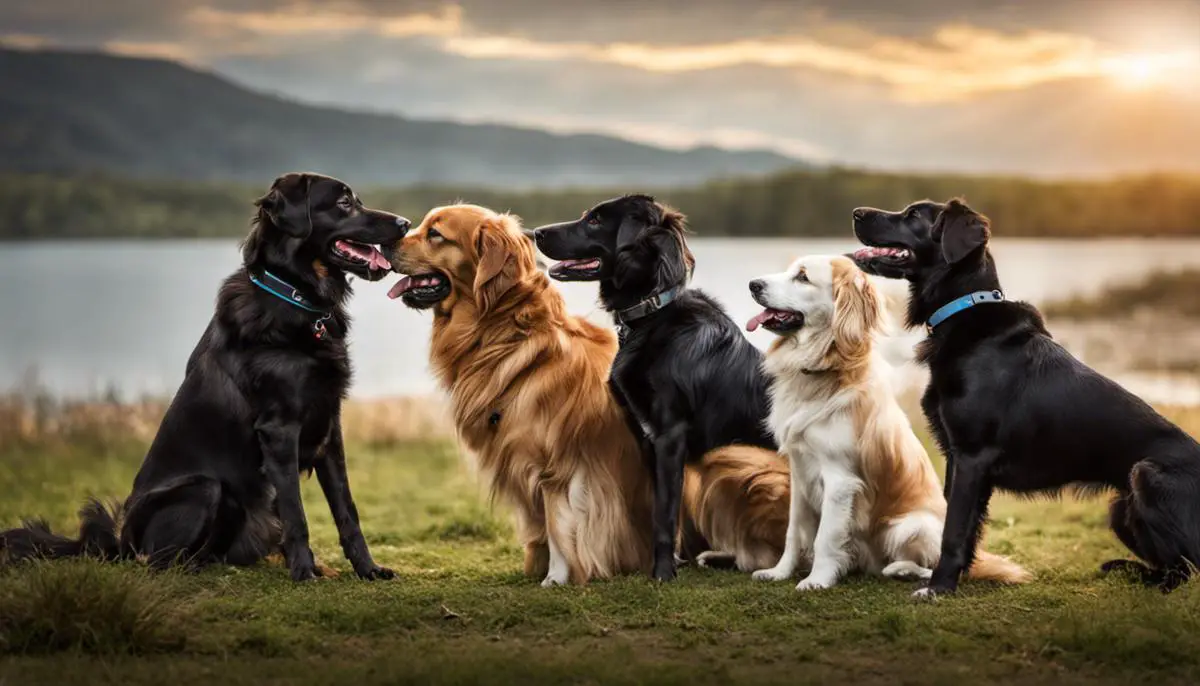Canine Mating Behaviour: A Detailed Exploration
Embarking on a comprehensive journey through canine behaviour and biology, this analysis brings into focus the far-reaching intricacies of dog mating and the numerous aspects that inform and shape it.
The behavioural context of dog mating sits centre stage, exploring the array of signals dogs elicit when ready to mate, a conversation steeped in the soil of ethology. Complimenting this, is a detailed exploration of physiological shifts, primarily the hormonal changes experienced by dogs and the role these play in orchestrating the mating dance.
We then shift our attention to the realm of scent, an often overlooked but hugely influential aspect of canine communication, profoundly influencing mating behaviours. Finally, no discussion on mating would be complete without touching on the impact that their social structures and interactions have on their decision-making and behaviours within the context of mating.
- The Behavioural Context of Dog Mating
- The Influences of Hormonal Changes and Mating Behaviours in Dogs
- The Role of Scent Communication in Canine Mating
- Unveiling the Olfactory Tapestries in Canine Mating
- Scent cues during Proestrus: The Eau de 'Ready to Mate'
- Transcending physical boundaries: Pheromonal influence on Thyroid function
- Diestrus: The scent of repulsion and the Progesterone Effect
- Male Canine's 'Scentual' manifesto: Cortisol, Testosterone, and Dominance
- Unravelling the olfactory thread in Canine Breeding Management
- Social Mediation of Dog Mating
The Behavioural Context of Dog Mating
The behavioural patterns of canines, specifically dogs during the mating period, hold a fascinating charm that has incited many a passionate academic study and research. These behaviours serve as biological indicators of readiness for procreation, providing essential information regarding their reproductive cycles.
A primary marker is the commencement of the ‘Estrus’ phase or the ‘heat’ in female dogs, distinctively signifying sexual receptiveness. The Estrus phase is typically characterised by a bloody discharge, although the quantity and colour may differ across breeds. During this period, which may persist between one to two weeks, females may exhibit increased urination – a tactic employed to disseminate pheromones and signal availability to potential mates.
Flirting behaviours can also be indicative of mating readiness. Females may perform what’s colloquially known as ‘flagging’ – the lifting of their tail to one side – giving unobstructed access for copulation. The flagging gesture may also be accompanied by playful behaviours such as prancing or pacing around to attract male attention. These are fundamental physical indicators of mating readiness, offering potent indicators of optimal fecundity.
Male dogs, impassioned by the female’s pheromone trails, display mating readiness through engaging behavioural responses. They exhibit heightened alertness, attentive to the slightest scent or visual cues from potential female mates. This could manifest itself as an incessant desire to roam, increased marking and intensified attentiveness to people or objects.
Copulatory behaviour in males also becomes apparent, including dominance postures, mounting behaviours, even with inanimate objects, or other dogs irrespective of sex. While these behaviours may exhibit year-round due to various environmental triggers, they amplify during periods of a female’s heat, offering a robust indicator of readiness for mating.
There’s something significant about how these behaviours are not merely instinctive responses but crucial biological indicators guiding the intricate process of procreation. Dogs, like many species, depend on these elementary signs to successfully reproduce, and as humans, understanding these signals can ensure better canine health and breeding management.
An appreciation of these intricate behavioural patterns can significantly enhance owner responsibility, proactive pet health management, and breeding practices, thereby ensuring thriving future generations of our profoundly cherished four-legged friends.

The Influences of Hormonal Changes and Mating Behaviours in Dogs
To delve deeper into the fascinating complexities of canine behavioural patterns, we must journey into the realm of endocrinology and observe the subtle yet impactful influences of cyclical hormonal shifts. This will allow us to better comprehend the intricate linkage between hormonal cycles and an array of mating behaviours in our faithful canine companions.
First, one must understand that while behavioural changes are visible, they are driven by an intricate and invisible interaction of hormones that regulate the reproductive cycle. For female dogs, the proestrus phase is traditionally characterized as the cycle’s opening act, heralding increased pheromone secretion and blooding spotting. These behaviours serve as vital signals for male dogs. However, the physiological orchestra fueling these outward indicators is less known.
Within the female canine body, follicle-stimulating hormones (FSH) and luteinizing hormones (LH) undergo complex interactions. FSH stimulates the growth of ovarian follicles, whereas LH triggers ovulation when the follicle matures. As FSH and LH levels surge, the behaviours like increased pheromone secretion and bloody spotting manifest, making the female canine more irresistible to potential male mates.
Moving into the diestrus phase, progesterone takes centre stage. It brings about an intriguing shift in the behaviours of female dogs, where they become less tolerant of male advances despite their bodies being primed for gestation. Progesterone also plays a crucial role in maintaining pregnancy once fertilization occurs, illustrating the perfectly orchestrated interaction of hormonal cycles and mating behaviours.
For male dogs, testosterone, the primary male sex hormone, significantly influences mating readiness and subsequent behaviours. Elevated testosterone levels instigate increased sniffing behaviours, vocalizations and even fights with rival males. However, it is essential to bear in mind that whilst an increase in testosterone levels results in heightened mating behaviours, the precise timing of mating mainly depends on the female’s estrous cycle.
Another important but subtle hormonal effect is the impact of pheromones from the female canine on the male dog’s thyroid hormone function. A female dog in heat can potentially cause a slight decrease in a male dog’s thyroid hormone levels, leading to increased appetite, restlessness, and heightened alertness – all vital behaviours for successful mating in the wild.
Simultaneously, during heightened mating readiness, male dogs may exhibit more pronounced anxiolytic behaviours associated with increased cortisol levels in response to potential mating and inter-male rivalry.
The integration of hormonal cycles and mating behaviours in dogs provides a riveting illustration of nature’s finesse. It is by contemplation of these intricate connections that we may gain a more profound understanding of our canine companions.
Investigating these cyclical hormonal influences is not merely an academic pursuit, but a essential step towards improving canine health, well-being, and breeding successes. The mastery of this knowledge empowers us to manage dogs responsibly and humanely in both domestic and professional environments.

The Role of Scent Communication in Canine Mating
Unveiling the Olfactory Tapestries in Canine Mating
Reviving the attention to scent communication, popularly termed “olfaction”, elucidates yet another layer of complexity in the intricate framework of canine mating behaviours. Emanating from a deep-rooted evolutionary mechanism, olfaction bestows vital biological information, serving as an undeniably influential form of communication in a myriad of living creatures, including our canine companions.
Despite prior extensive contemplation on judicial recognition of physical and behavioural signs during canine estrus, a deeper grasp of the specific scent cues exchanged during these cycles adds a broader perspective to our understanding. In essence, hormonal alterations that manifest in behaviour and physicality also undergo an osmotic transformation to impact the spectrum of scent communication.
Scent cues during Proestrus: The Eau de ‘Ready to Mate’
The proestrus phase, often demarcated by distinct behavioural signs such as timidness or aggression towards male dogs, is strategically infused with numerous scent signals. The distinctive scent of ‘bitch in heat’, can extraordinarily pique the interspecies Charmeur, leaving them hooked, awaiting the right opportunity. The subtle variations in these pheromones, particularly driven by follicle-stimulating hormones (FSH) and luteinizing hormones (LH), effortlessly narrate the story of the specific phase of the canine cycle.
Transcending physical boundaries: Pheromonal influence on Thyroid function
The receipt of female scent cues doesn’t merely trigger an increase in male courtship behaviour. Remarkably, the interaction of these potent olfactory signatures with the male dogs’ endocrine system disrupts their thyroid hormonal functions. Essentially, this derails their hormonal balance, temporarily veering them towards exhibiting heightened mating readiness.
Diestrus: The scent of repulsion and the Progesterone Effect
As the female transitions into the diestrus phase, a simultaneous shift in her scent profile emerges, invoking an instinctive ‘repulsion effect’ in male dogs—a most intriguing facet of scent communication reflecting Nature’s way of implying ‘mating season over.’
Male Canine’s ‘Scentual’ manifesto: Cortisol, Testosterone, and Dominance
In male dogs, the testosterone-induced scent has long been associated with strengthening dominance and asserting territorial claims. Notwithstanding, stress hormones, particularly cortisol, elevate in tandem with testosterone during mating readiness, amplifying the potency of scent communication infused in urinary marking.
Unravelling the olfactory thread in Canine Breeding Management
Ergo, understanding the intricate tapestry of olfactory signals during canine mating is paramount, beyond scientific curiosity. It artfully informs intervention strategies that could significantly aid in resolving lingering issues in canine health and breeding management. Consequently, the indispensable nexus between hormonal changes and scent communication can no longer be an area obscured by scientific blind spots, but rather an essential dialogue, primed for an earnest exploration.
In concluding remarks, the application of our knowledge of these interactions is unbounded, from promoting responsible breeding practices, understanding eons-old mean of communication, to even resolving behavioural issues. Towards this end, all dog lovers, breeders and veterinarians, through an appreciation of the string of scentual narratives between canines, can foster a healthier, happier canine community.

Social Mediation of Dog Mating
The social hierarchy among dogs is an often overlooked but critical aspect of canine behaviour, particularly as it pertains to mating. Each group of dogs typically has an established social structure, influenced by various factors such as age, sex, and behaviour, which invariably influences the mating process.
Within this structure, not all dogs are considered equal. Some are considered ‘alpha’, occupying a dominant position and exercising control over others in the group. The alpha dogs, either male or female, usually enjoy priority during feeding, resting, and indeed in sexual procreation – they tend to mate before other dogs in the group.
It is important to note that the manifestation of this hierarchical system is fluid and not fixed, responding to the dynamics within the group. Canine sociologists have likened these interactions to a ‘tug of war’, whereby a dog may gain or lose status based on its behaviours and how it navigates its relationships with other dogs in the group.
Dominance and submission play profound roles in these canine interactions. Dominant male dogs frequently exhibit behaviours aimed at asserting their status, such as posture displays, intimidation, or occasionally, aggression. Female dogs capably ascertain these behavioural cues, recognising the dominant males as prime mating partners.
Submission signals from other dogs, both male and female, serve to reinforce this hierarchical order. This pattern aligns with the ‘selective mate choice’ theory, which postulates that females prefer males who present characteristics of robust genetics and vitality, enhancing the survival probabilities of their offspring.
The social dynamics among dogs also influence mating sequels. In many instances, subsequent to successful mating, female dogs will attempt to deter other males from mating. This behaviour, known as ‘mate guarding’, ostensibly secures the investment of the initial partner and reduces competition over parentage. Mate guarding can be observed in both sexes, but it is more pronounced in males, exemplifying the dynamics of competition within the dog pack.
A well-fathomed understanding of the role social dynamics play in canine mating can be highly beneficial for dog breeders. Formulating and defining breeding strategies, successful canine health management, and indeed dealing with behavioural issues, could be vastly improved with an understanding of these intricate dog pack relationships. Observing and studying these behaviours can also offer insight into the evolutionary biology and social structure of domestic dogs.
The subject of canine social dynamics and mating behaviours presents an exciting frontier for further research. While the interactions within a dog group are rooted in thousands of years of natural selection, domestication and associated human interventions have significantly shaped and reshaped these behaviours. As a result, the social nuances within these dynamics continue to evolve, offering compelling opportunities for new observations and scientific findings.
In conclusion, the social dynamic within dog packs plays a pivotal role in shaping the mating behaviours and outcomes of these animals. Ignoring this fact will be detrimental to the broader understanding of canine health, breeding, and behaviour management. Observing and studying these canine social interactions should be an integral part of any serious research on dog behaviour and reproductive biology.

Delving into each aspect, it becomes increasingly evident that dog mating is an orchestra of finely tuned behaviours, biological changes, sensory communication and social interactions. This amalgamation works harmoniously to create a rich tapestry of interaction that results in successful reproduction.
Deciphering this complex mating ritual not only helps in gaining a better understanding of canine behaviour, but it also serves a practical purpose in ensuring the well-being of our pets and improving breeding strategies.
Hence, a more nuanced, multi-faceted exploration of these dynamics provides a deeper understanding of not only the mating behaviours of canines but also their general behaviour, thereby enriching our relationship with man’s best friend.
